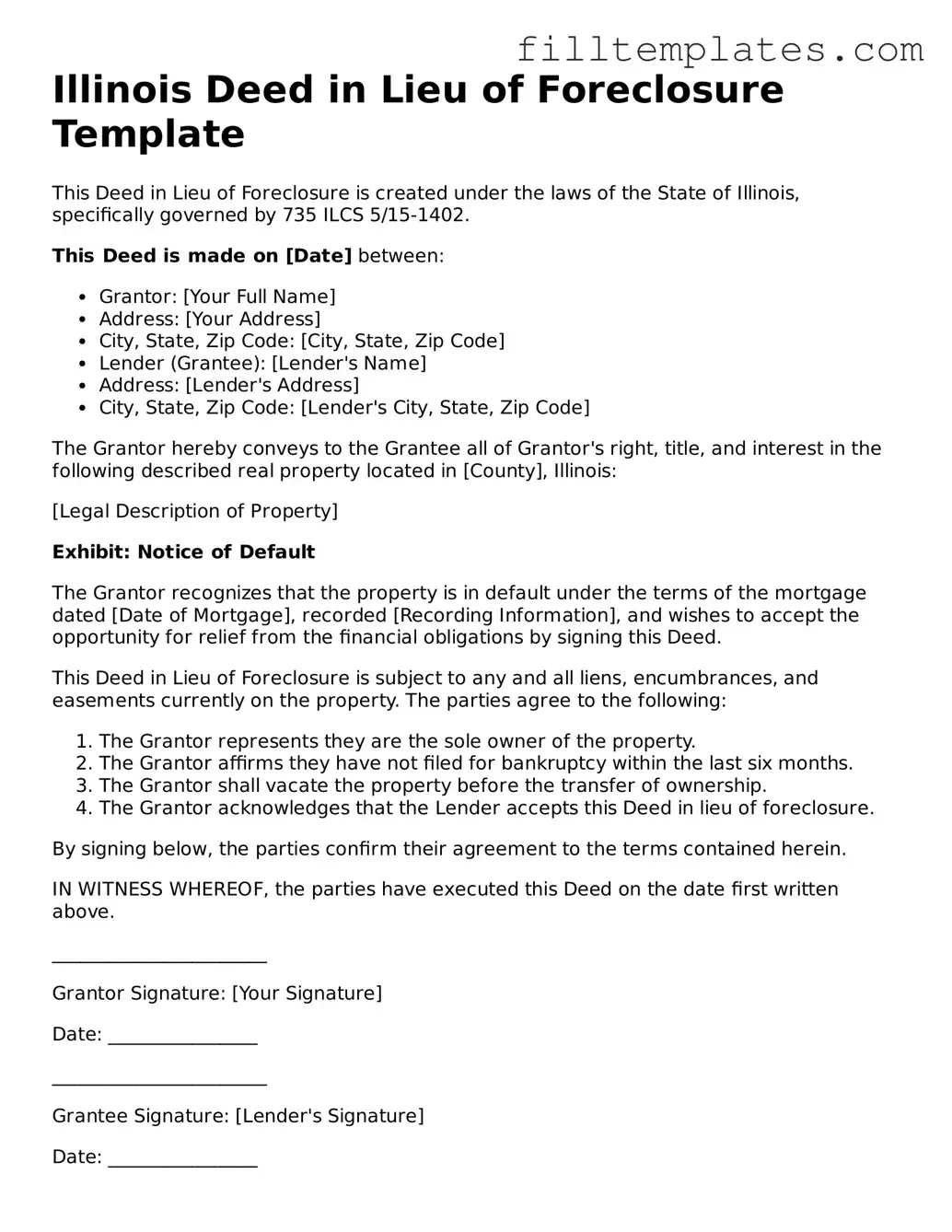Illinois Deed in Lieu of Foreclosure Template
This Deed in Lieu of Foreclosure is created under the laws of the State of Illinois, specifically governed by 735 ILCS 5/15-1402.
This Deed is made on [Date] between:
- Grantor: [Your Full Name]
- Address: [Your Address]
- City, State, Zip Code: [City, State, Zip Code]
- Lender (Grantee): [Lender's Name]
- Address: [Lender's Address]
- City, State, Zip Code: [Lender's City, State, Zip Code]
The Grantor hereby conveys to the Grantee all of Grantor's right, title, and interest in the following described real property located in [County], Illinois:
[Legal Description of Property]
Exhibit: Notice of Default
The Grantor recognizes that the property is in default under the terms of the mortgage dated [Date of Mortgage], recorded [Recording Information], and wishes to accept the opportunity for relief from the financial obligations by signing this Deed.
This Deed in Lieu of Foreclosure is subject to any and all liens, encumbrances, and easements currently on the property. The parties agree to the following:
- The Grantor represents they are the sole owner of the property.
- The Grantor affirms they have not filed for bankruptcy within the last six months.
- The Grantor shall vacate the property before the transfer of ownership.
- The Grantor acknowledges that the Lender accepts this Deed in lieu of foreclosure.
By signing below, the parties confirm their agreement to the terms contained herein.
IN WITNESS WHEREOF, the parties have executed this Deed on the date first written above.
_______________________
Grantor Signature: [Your Signature]
Date: ________________
_______________________
Grantee Signature: [Lender's Signature]
Date: ________________
Notary Public:
_______________________
Notary Signature: _________________
Date: ________________
This document should be recorded in the appropriate county clerk's office to ensure proper notice to third parties.
